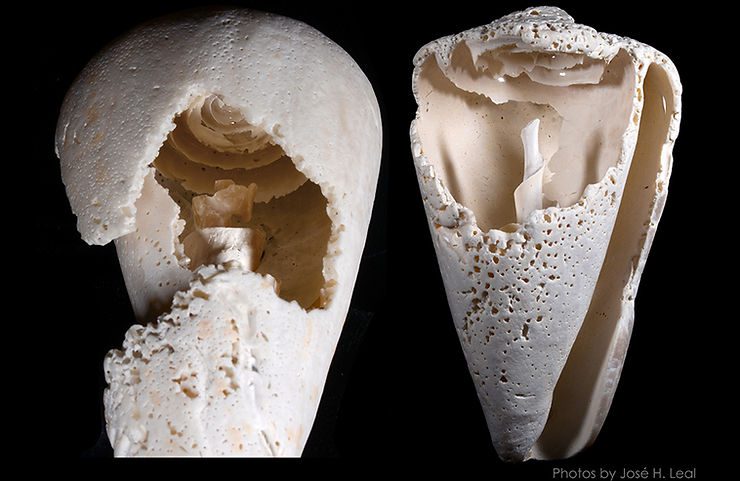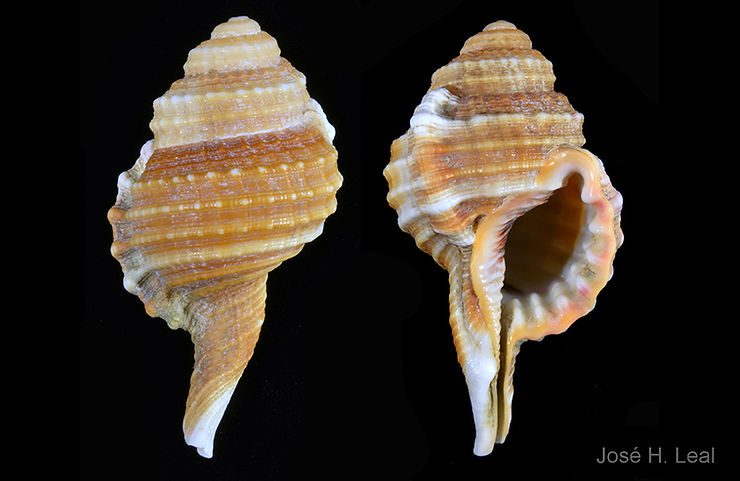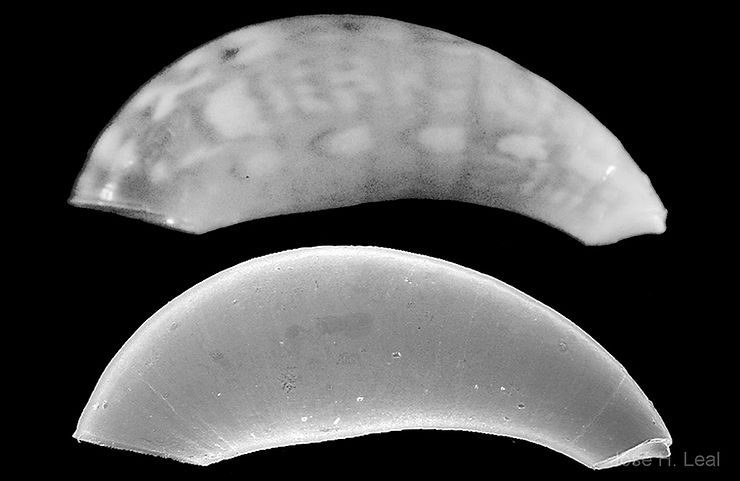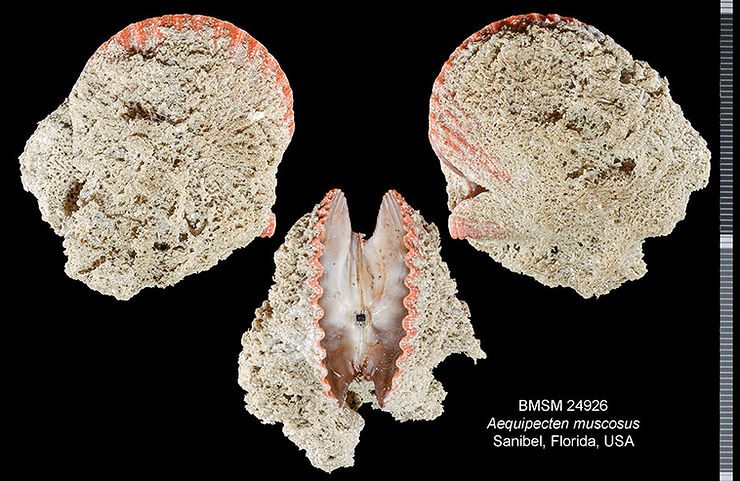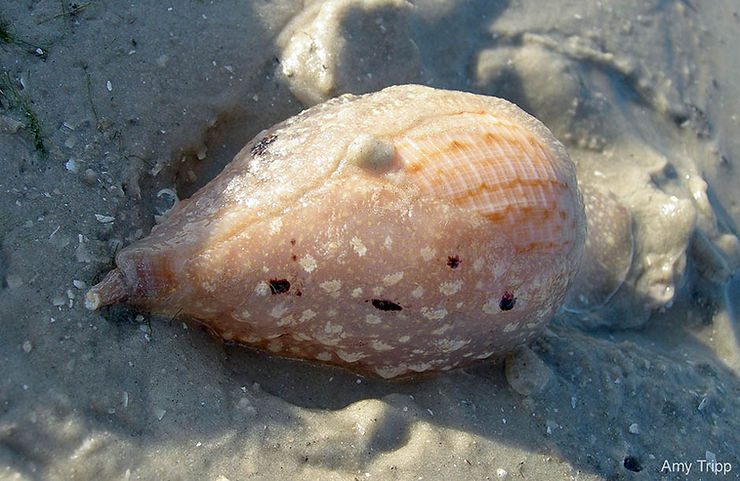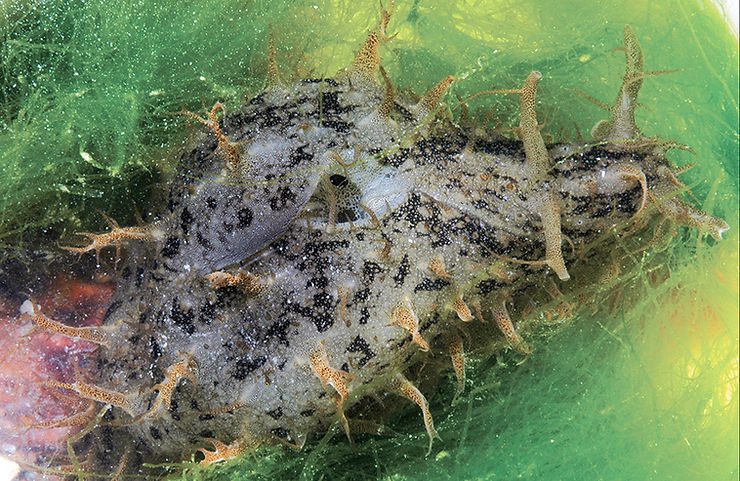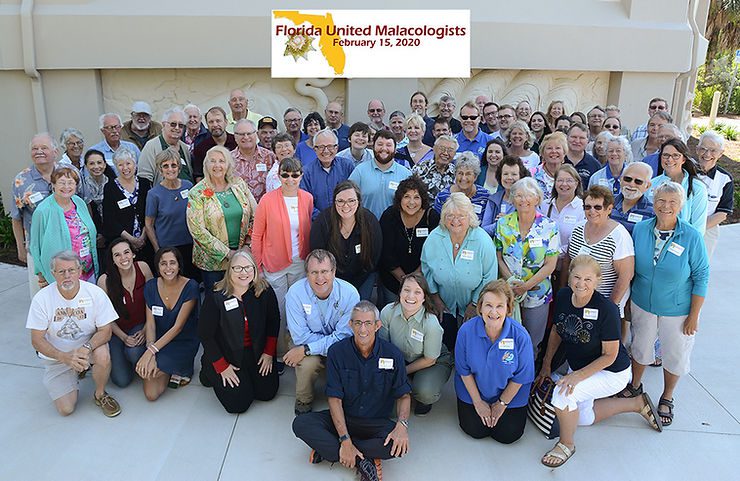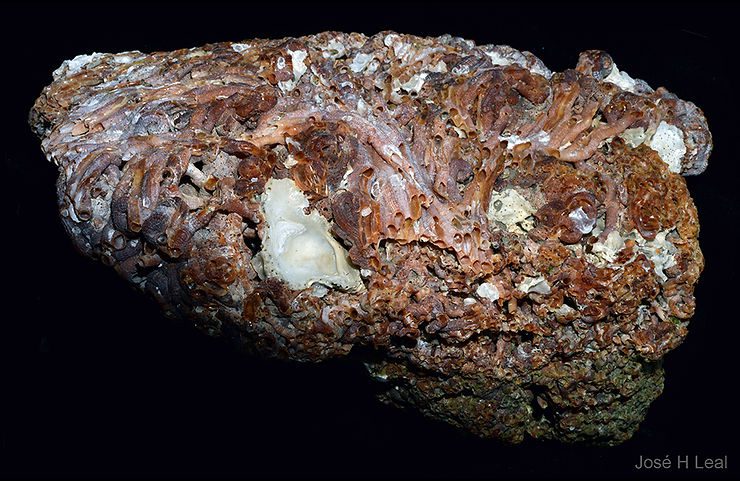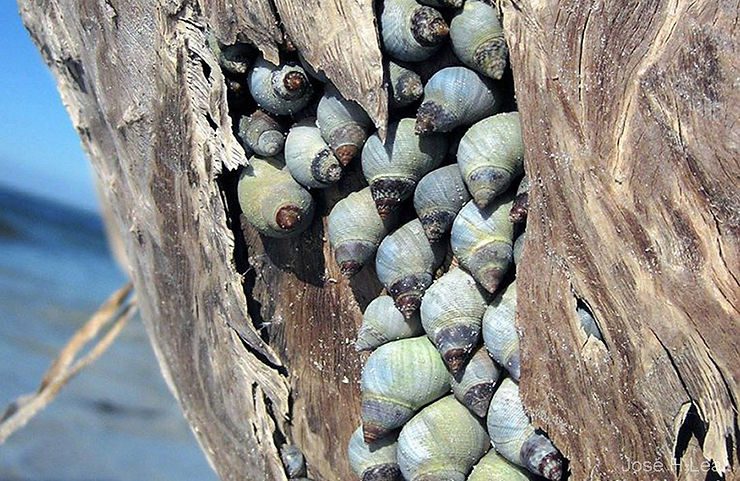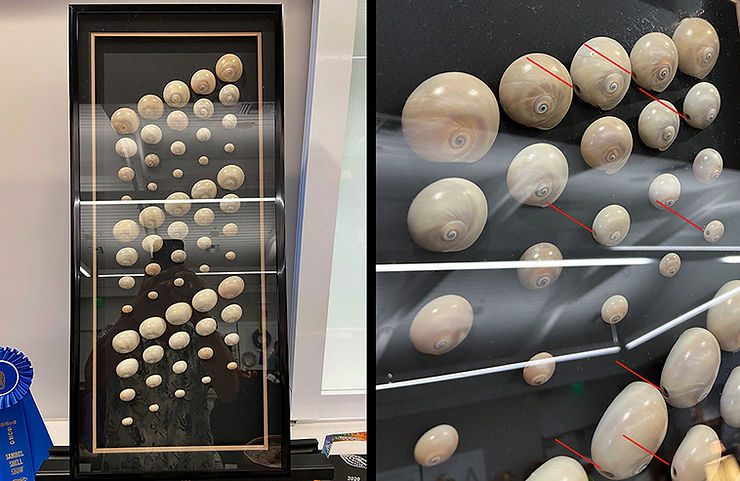
Shell Art and Shark Eyes Cannibalism
During the Sanibel Shell Show and Fair in March, architect and designer Charles Barr presented an elegant, contemporary-looking piece of artwork displaying Shark Eye shells, Neverita duplicata. The shells were deployed in three identical groups, each containing four rows of four distinct sizes, each row with five shells each, for a total of 60 shells. A close look revealed that many had been drilled by predatory gastropods. Drill holes (red lines in photo) were in 26 shells, or about 43% of the
